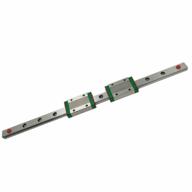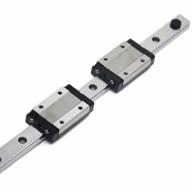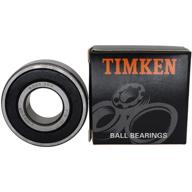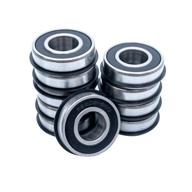
Review on 💫 Enhanced Precision: Actuator Sfu1605 Stepper Beauty Star for Optimal Performance by Mark Lodge

Well, if you don't mind making some adjustments.
I bought four drives from you last year. Cons: Unless you just need to move the unloaded "stage" back and forth, be prepared to install a more powerful stepper motor. The whole unit (without motor) is suitable for light duty applications. In our case, we just move the inkjet print head back and forth horizontally. Be prepared to replace the included "Odd Ball" motor. The attached one barely has enough power to reliably move the "unencumbered" scene. Also, plan to have different sizes of motor shaft-to-screw coupling adapters on hand so you can swap out the motor for one that suits your needs. Oddly, they use an oversized stepper motor. with a large shaft diameter. In other words, for some of their sizes (i.e. stroke) they will fit in a NEMA 17 motor that has a NEMA 23 shaft size. It seems like they KNOW that the end user will need to replace the supplied "crazy" motor. Pros: There is no slack in the bolt-nut assembly and you can adjust the guide bearings snugly on the guide rods to keep side play (swing) under control. You can think of these units as an inexpensive and easy to set up "linear actuator kit". This is because we had to completely disassemble each one and then select a different motor, and in some cases had to change the bolt and nut from "single" to "quad" to get enough speed. FYI, a single starting screw moves the "nut/assembly" in one revolution (each revolution) a distance equal to the thread pitch of the screw. A 4-start bolt will move the nut/assembly four times more per revolution than a 1-start bolt. with the same thread pitch. Think of the thread pitch as a nut and bolt. For example, compare USS 1/2" coarse thread in bold with 13 TPI (threads per inch) with SAE 1/2" fine thread with 20 TPI spot. With bolts, screws, threaded rods and nuts, coarse threads move the nut further/faster per revolution than fine threads. Of course, it is rare to find a bolt and nut assembly with more than a single thread. That is, if you haven't been behind the scenes and had a chance to see some of the nuts and bolts used by some of NASCAR's fastest pit crews. I was there and did it in 1971 too.
- Very impressive
- boring packaging
New products
Comments (0)
Top products in 🔧 Linear Motion Products

Iverntech MGN12 400Mm Linear Rail Guide Upgrade For Ender 3, Corexy, Tronxy, Delta Kossel 3D Printers And CNC Machines With Stainless Steel Carriage Block

12 Review

Iverntech MGN12H Linear Rail Guide With Stainless Steel Carriage Blocks - 700Mm Length For 3D Printer And CNC Machine

9 Review

Iverntech 400Mm MGN12 Linear Rail Guide With 2 Black Stainless Steel MGN12H Carriage Blocks For CNC Parts And 3D Printer Upgrades

8 Review

Goodyear Ultra Grip Ice SUV 235/65 R17 108T winter

35 Review






